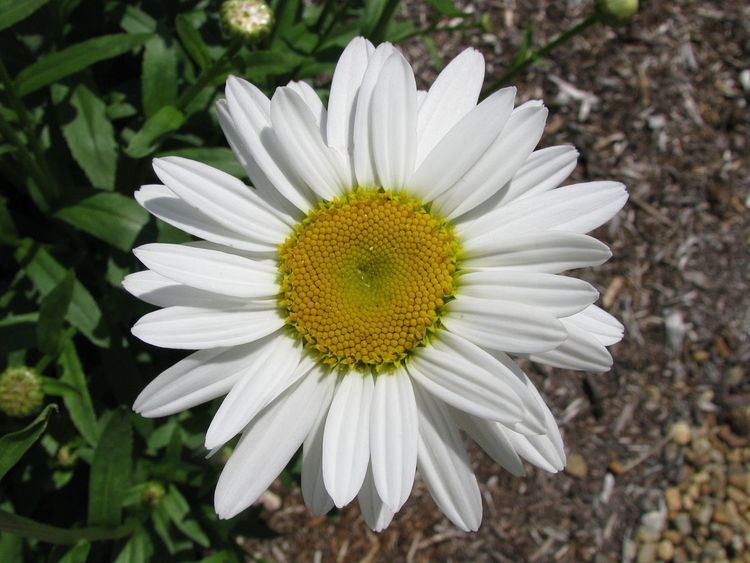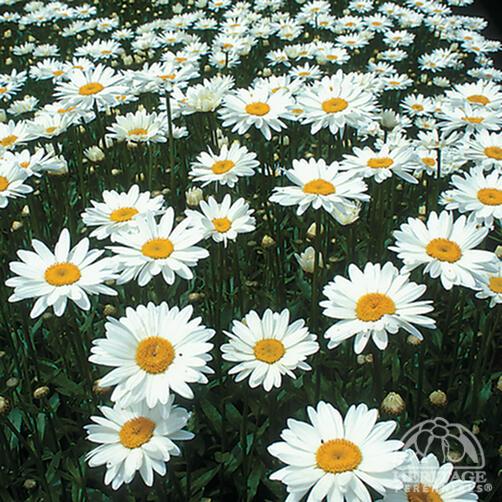Scientific name Leucanthemum × superbum Rank Hybrid | Species L. × superbum Higher classification Leucanthemum | |
 | ||
Similar Leucanthemum, Daisy family, Oxeye daisy, Leucanthemum maximum, Blackeyed Susan | ||
Leucanthemum × superbum (or Shasta daisy) is a commonly grown flowering herbaceous perennial plant with the classic daisy appearance of white petals (ray florets) around a yellow disc, similar to the oxeye daisy Leucanthemum vulgare but larger. Shasta daisies are characterized by a distinct odor which some find unpleasant.

It originated as a hybrid produced in 1890 by the American horticulturist Luther Burbank from a number of daisies. First, he crossed Leucanthemum vulgare with Leucanthemum maximum (Ramond) DC.; this double hybrid was itself crossed with Leucanthemum lacustre (Brot.) Samp. The resulting Leucanthemum triple hybrid was crossed with Nipponanthemum nipponicum (Franch. ex Maxim.) Kitam., creating an intergeneric cross of species from three continents. It was named after Mount Shasta, because its petals were the color of the snow. Some members of the genus are considered noxious weeds, but the Shasta daisy remains a favorite garden plant and groundcover.
Many cultivars are suitable for cut flowers, such as 'Becky', 'Esther Read', 'Silberprinzesschen' (Silver Princess), 'Snow Lady', 'Tinkerbell', 'Wirral Pride', 'Wirral Supreme'. The cultivar 'T.E. Killin' has gained the Royal Horticultural Society's Award of Garden Merit.

